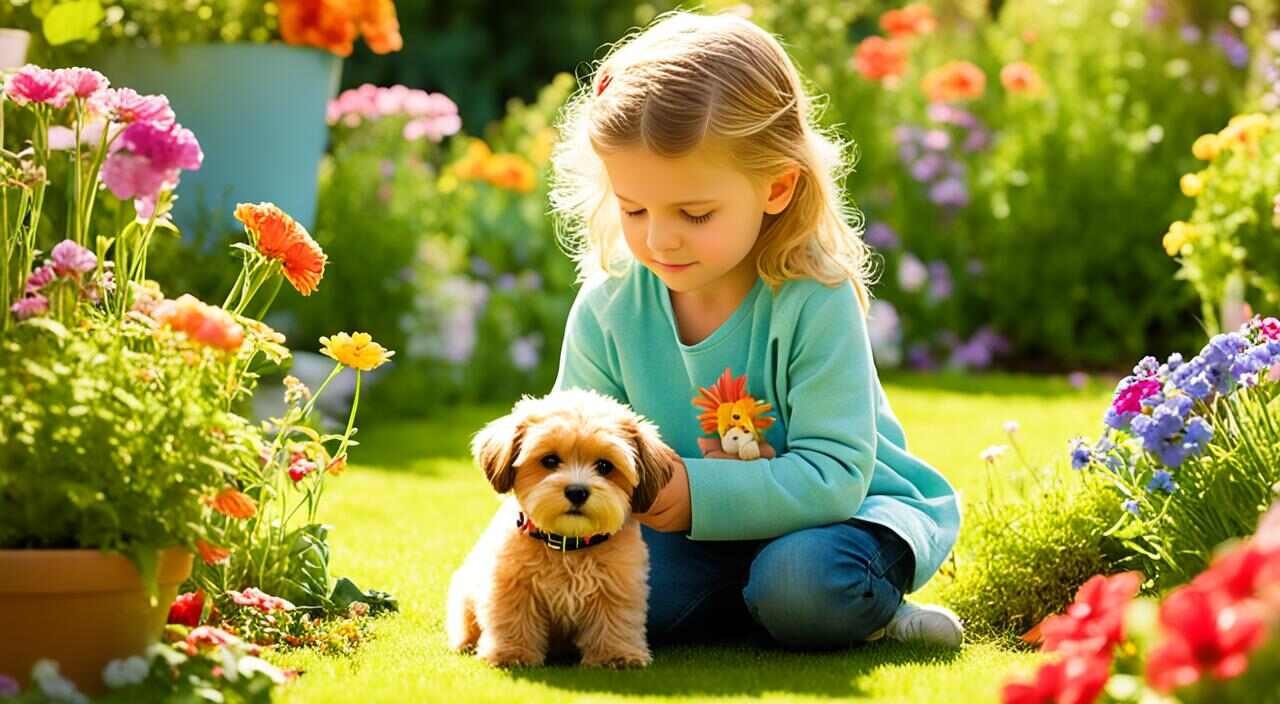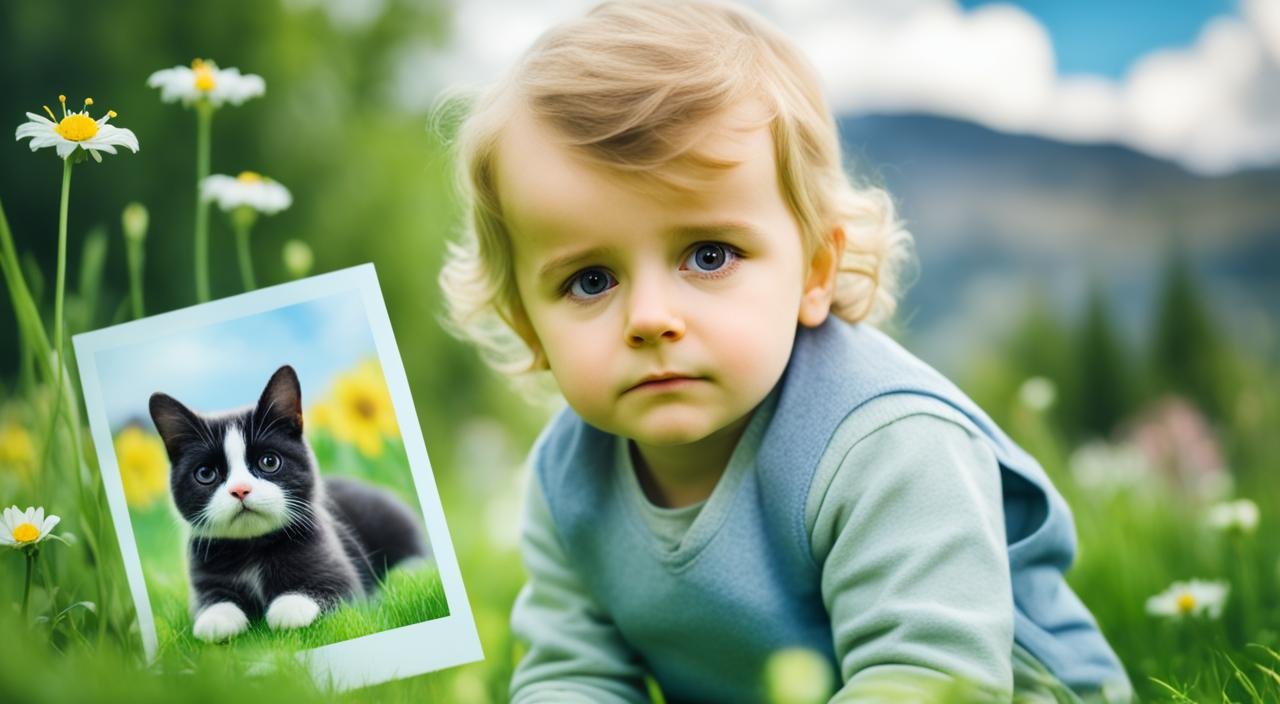Explaining the death of a beloved pet to a child can be a challenging and sensitive task. Pets are often considered part of the family, and when they pass away, it can be difficult for children to understand and cope with their emotions. However, by approaching the topic with compassion and clarity, you can help children navigate the grieving process and find comfort in their memories. This guide provides strategies and advice for explaining pet death to children at different age levels, as well as suggestions on how to support them through the grieving process.
Key Takeaways:
- Explaining pet death to a child requires compassion and clarity
- Consider the child’s age and emotional development when discussing pet loss
- Prepare young children for pet loss by discussing it before it happens
- Use age-appropriate language and address their concerns honestly
- Validate children’s emotions and provide support throughout the grieving process
Explaining Pet Loss to Young Children (7 and Under)
When discussing the difficult topic of pet loss with young children, it’s essential to consider their emotional development and maturity level. Children under the age of 7 may not fully comprehend the concept of death, and they may need guidance in processing their emotions.
To prepare young children for pet loss, it’s advisable to have conversations about the possibility of a terminally ill or older pet passing away. By discussing this potential outcome before it happens, you can help them better understand when the time comes.
When explaining pet loss, choose words that are direct, honest, and calm. Avoid euphemisms or confusing phrases that may lead to misunderstandings. Encourage children to ask questions to clarify any doubts or concerns they may have. Provide age-appropriate answers that address their specific worries and reassure them that the pet’s death was not their fault.
It is common for young children to exhibit behaviors such as regression or denial when coping with pet loss. Reassure them that these reactions are normal and part of the grieving process. Offer comfort and support as they navigate their feelings and memories.
Using children’s books that explain death in a comforting and relatable way can be highly beneficial in assisting their understanding of the situation. These books often use age-appropriate language and visuals to help young children grasp the concept of death and cope with their emotions.
Children’s Book Recommendations:
- “The Invisible String” by Patrice Karst – This book beautifully explains how love and connections remain even after death, comforting children with the idea that they are always connected to their loved ones who have passed away.
- “The Goodbye Book” by Todd Parr – This book explores the emotions children may experience when facing loss, offering reassurance and support while emphasizing that it’s okay to feel sad.
- “Always Remember” by Cece Meng – This heartfelt story portrays a young elephant who learns to cope with the loss of a loved one. It encourages children to cherish memories and find comfort in remembering those who are no longer with us.
Using these resources, along with open communication and age-appropriate explanations, can help young children navigate the grieving process and find solace after the loss of a beloved pet.
Explaining Pet Loss to Older Children (Over 8)
When it comes to explaining pet loss to older children, it’s essential to recognize their increased capacity to understand death and provide them with the necessary support. If the pet was euthanized, it is important to explain the concept of euthanasia to them clearly and assure them that it was a compassionate decision made to prevent further suffering.
Encourage open communication with older children and create a safe space for them to ask questions or express their feelings. Validate their emotions and let them know that grief is a natural response to the loss of a pet. Remind teenagers that it is okay to cry and express their emotions.
It can be helpful to provide resources such as books on grief and loss, which can aid older children in navigating their feelings and provide them with additional support. These resources can offer valuable insights and coping strategies, helping teenagers cope with pet loss more effectively.
Supporting older children in their grief is essential for their emotional well-being. By acknowledging their emotions, offering a listening ear, and providing appropriate resources, you can help them navigate the complex emotions associated with pet loss.
Supporting Children in Grief and Coping with Pet Loss

The loss of a pet can have a profound impact on children, and it is crucial to provide them with support and guidance as they navigate the grieving process. By validating their emotions, creating meaningful rituals, and offering resources, you can help children cope with pet loss and celebrate the life of their beloved companion.
When a pet passes away, it is normal for children to feel sadness, grief, and even guilt. Validating their emotions and letting them know that it is okay to feel these things can provide comfort and reassurance. Share your own feelings of loss, reminiscing about the special moments and memories you shared with the pet. This can help children understand that it is natural to feel a sense of loss when a loved one, even a furry one, is no longer with us.
“The bond with a pet is unique and special, and when that bond is broken, it is important to acknowledge and honor the impact it has on a child’s life.”
To honor the life of the pet and provide closure, engage in a goodbye ritual. This can take many forms, such as creating a scrapbook filled with pictures and memories, holding a memorial service or ceremony, or symbolically scattering the pet’s ashes in a meaningful location. These rituals not only pay tribute to the pet but also allow children to express their feelings and say goodbye in their own way.
Encourage children to share their thoughts and memories through talking, writing, or drawing. This can provide an outlet for them to process their emotions and express their love for their lost companion. Listen actively, offering a safe space for them to reflect and share stories about the pet. This validation and active listening can help children feel understood and supported during this difficult time.
It is important to remind children that the pet’s death was not their fault. Guilt is a common emotion experienced by children when a pet dies, and reassuring them that they are not to blame can alleviate their burden. Emphasize that their caregivers will continue to provide love and care, ensuring their emotional well-being.
Providing resources, such as children’s books on dealing with loss and grief, can offer additional support and comfort. These books can help children understand the different stages of grief, normalize their emotions, and provide coping strategies. By reading these books together, you can facilitate conversations about loss and further validate their emotions.
| Ways to Support Children in Grieving the Loss of a Pet | Benefits |
|---|---|
| Validate their emotions | Provides comfort and reassurance |
| Engage in a goodbye ritual | Honors the pet’s life and allows children to express their feelings |
| Encourage sharing thoughts and memories | Offers an outlet for processing emotions and expressing love for the pet |
| Remind them they are not at fault | Alleviates guilt and assures ongoing care |
| Provide resources such as children’s books on dealing with loss and grief | Offers additional support and coping strategies |
Conclusion
Explaining pet death to a child is a challenging but necessary part of helping them navigate the grieving process. By being honest, validating their emotions, and providing support, you can help children understand and cope with the loss of a beloved pet. Remember that each child may process grief differently based on their age and developmental level, and it is important to tailor your approach to their specific needs. Creating a safe and open environment for discussing feelings and memories can provide comfort and healing for the whole family.
FAQ
How do I explain pet death to a young child?
When explaining pet death to young children, use direct, honest, and calm language. Prepare them for the loss by discussing the possibility of their older or terminally ill pet dying. Encourage them to ask questions and provide age-appropriate answers that address their concerns. You can also use children’s books that explain death in a comforting way to help with their understanding.
How do I explain pet loss to older children?
Older children have a greater capacity to understand death. When discussing pet loss with them, explain the role of euthanasia if applicable, and assure them it was a compassionate decision to prevent further suffering. Encourage open communication, validate their emotions, and provide resources like books on grief and loss to help them navigate their feelings.
How can I support children in their grief after losing a pet?
It’s crucial to validate children’s emotions and let them know that feeling sadness and grief is normal. Share your own feelings of loss and talk about the special memories you have of the pet. Engage in a goodbye ritual, such as creating a scrapbook or holding a memorial service, to honor the pet’s life. Encourage them to express their thoughts and memories through talking, writing, or drawing. Provide resources like children’s books on dealing with loss to further support them.
How can I help children cope with pet loss?
Help children cope with pet loss by creating a safe and open environment for discussing their feelings and memories. Remind them that the pet’s death was not their fault and that they will still be cared for by their caregivers. Validate their emotions and provide resources to help them understand and cope with their grief, such as children’s books on dealing with loss.





